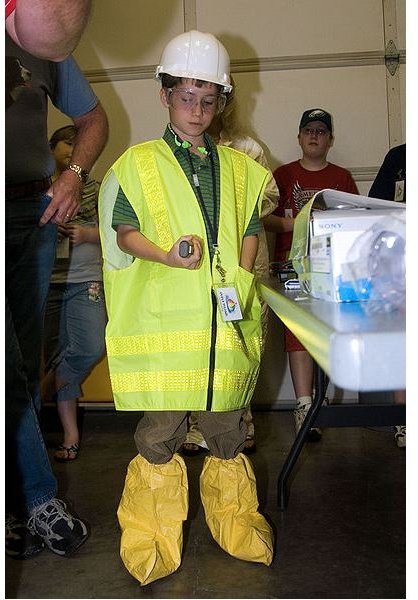Take Your Child to Work Day: Activities and Tips
Misconceptions
Managers and business owners sometimes worry that having all the children around will bring workflow to a stand-still. Employees can feel self-conscious about bringing a child to a workplace where there may be tensions. Even children do not always want to participate in the event; whether they predict boredom or just did not really enjoy the last time that they visited mom or dad at work, the thought of spending eight hours at the business does not sound like fun. Nip these misconceptions in the bud with a modicum of preparation. In this instance it is the business that must take the leadership role and set the stage for a successful event.
Getting Ready: Tips for the Management Team and Employees
The Take Our Daughters and Sons To Work Foundation helps business owners and management staff to set up the workplace for the annual event. Plan carefully to meet the needs of the attendees – but also the requirements of the business.
- Management determines ahead of time if the event will be a full-day occasion or only a half-day occurrence. Staff must know in advance if they need to find transportation for the children to go home, or if the youngsters may spend the entire workday on location.
- Supervisors remind employees of age limitations. The Foundation suggests inviting children over the age of eight to the office, but if you choose to also welcome younger children, be sure to have age-appropriate activities ready for them.
- Register children prior to the event. Knowing how many youngsters will attend helps with the setup and planning. This is also the appropriate time to ask parents to sign a release form.
Employees, too, must plan ahead to make the day a success.
- Plan to work ahead. The business must continue to function, even though the children will demand a good bit of attention. Meeting deadlines ahead of time, or delegating work to peers who do not participate in the event, takes planning and good communication.
- Alert the management team to special considerations the child needs. If a child has dietary limitations or requires medication at certain times throughout the day, let the supervisor in charge of the event know.
- Explain to the child what types of behaviors are unacceptable. Discuss also how to dress, behave and what to bring or leave at home.
Company Program Highlights for Fun and Education
Start off the day on the right foot.
- Breakfast briefing. Just like the adults, who enjoy a breakfast presentation or staff meeting with donuts, welcome the children in a conference room. Serve donuts, orange juice, chocolate milk and other light breakfast goodies. This is a good time to hand out notebooks, pens or pencils and let the kids know what the agenda for the day will be.
- Hands-on work. Introduce the children to the office equipment. If the business has some spare cubicles, use them to set up mock workstations with currently unused equipment. Instruct the youngsters how to run a copier, properly answer the business phone, page someone or file paperwork.
- Grand tours. Have an employee dress up like a safari tour guide and take the children on a tour around the facility. Make it interesting by putting some unexpected décor items into broom closets; examples include surfboards, cut-outs of wild animals or bikes.
- Dress-up. Depending on the type of company you run, offer dress-up clothes germane to the various positions. There are secretaries’ outfits, lab coats, briefcases, hats, tool belts and a host of other odds and ends the children can use to customize their own costumes.
Parent-led Activities
These activities can take place at home, to prepare the child for a day at the office or factory, and also while at the parent’s workplace.
- Set up a small workstation. A large cardboard box can double as a desk. Outfit it with a scratch pad, pencils, crayons and maybe even an old phone. Pretend to call the child on the phone – for younger kids – and have conversations in this manner. If there is some lag time between company-led activities, let the child prepare some artwork for your office, cubicle or workstation.
- Introduce the child to various types of office equipment. Younger children in particular will appreciate learning some rudimentary typing skills. Online typing tutor programs keep children busy while also teaching them about future job skills. Do not forget to let the child push the button of the copier, help fetch the mail from the boxes and turn the key to the storage room. Let the child perform as many tasks as is permissible and safe. Entrust an older child with typing up a memo or collating and stapling a presentation.
- Introduce basic work skills. If the employee is in the accounting field, the mom or dad can teach the child how to use a calculator and practice 10-key by sight. If the worker is a mail clerk, highlight the need for alphabetization and code recognition. Begin this process at home and allow the child to try out the task at the office. Consider bringing along mock worksheets or mail pieces for the youngster to process.
Remember that “Take Your Child to Work Day” activities need to be planned well in advance of the actual event. Do not try to “wing it” and let children become bored. Moreover, keep the activities age-appropriate; a 15-year-old youngster is unlikely to be excited about crayons or a pretend workstation. This child will be much more likely to appreciate the hands-on activities, like computing, which actually produce a useful result.
Sources
- Take Our Daughters and Sons To Work Foundation, https://www.daughtersandsonstowork.org/user-assets/PDF/2009%20Bright%20Ideas%20Guide.pdf
- Image: “FEMA ‘Take Your Child to Work Day’” by Karen Nutini/Wikimedia Commons via public domain license
